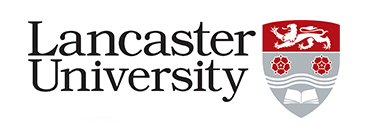英格兰第一学年不记成绩,第二年30%-40%,第三年60%-70%。
如果是四年荣誉学位,最后的学位将以最后两年的成绩作为权重计算的基础。
苏格兰本科为四年,以下以格拉斯哥大学为例说明。
格拉斯哥大学本科一般三年或者四年。学生读完大二时,按照大二的总成绩,决定是否能够读荣誉学位。
要是大二成绩一般,则只能读普通学位,大三读完就毕业,没有大四,所以这种情况就是一共三年。要是大二成绩好,那就能选择读荣誉学位,大四读完就可以毕业,这样的话就是一共四年。每个专业可能略有不同。
3年非荣誉学位,要求修满至少360个学分,其中包括LEVEL 3 的60个学分。最终GPA由每门课的成绩以学分权重计算。要求最终计算出的gpa最少达到9.0或者280个学分有A-D的成绩,其中包括Level3 的60个学分。才可获得普通本科学位(非荣誉)。
如果是四年荣誉学位,最后的学位将以最后两年的成绩作为权重计算的基础。
The number of grade points the student has eamed in that course. The student's GPA is determined by adding up their total grade points and dividing by their total number of credits.
Table 2.1 Grades and equivalent grade points (taken from Schedules A and B) Schedule A Grade points Schedule B Grade points Schedule A Grade points Schedule B Grade points A1 22 A0 22 D1 11 D0 11 A2 21 D2 10 A3 20 D3 9 A4 19 E1 8 E0 8 A5 18 E2 7 B1 17 B0 17 E3 6 B2 16 F1 5 F0 5 B3 15 F2 4 C1 14 C0 14 F3 3 C2 13 G1 2 G0 2 C3 12 G2 1 H 0 H 0 As shown in the examples below, the method of calculating the final result for the course depends on whether grades under Schedule A or Schedule B or a combination of both are used. 2.3.1 Courses assessed only under Schedule A Example 2.E Consider a course in which there are two in-course assessments each weighted 12.5% and an endof-course examination weighted 75%. Suppose that Ayesha’s results in these assessments are D1 and C3, and B1, respectively. Her course result will be calculated as follows: course result= (0.125 x D1) + (0.125 x C3) + (0.75 x B1) = (0.125 x 11) + (0125 x 12) + (0.75 x 17) (from Schedule A) = 1.375 + 1.5 + 12.75 = 15.625 ≈ 16 (rounded to an integer) = B2 (from Schedule A) Suppose also that Bert’s results in the same assessments are D3 and C2, and D2, respectively. His course result will be calculated as follows: course result= (0.125 x D3) + (0.125 x C2) + (0.75 x D2) = (0.125 x 9) + (0.125 x 13) + (0.75 x 10) (from Schedule A) = 1.125 + 1.625 + 7.5 = 10.25 Guide to the Code of Assessment – Chapter 2 - Page 9 August 2021 ≈ 10 (rounded to an integer) = D2 (from Schedule A) Percentage marking is permissible in some courses (particularly in the Sciences and Engineering) but only where it is feasible to set assessment tasks that can be marked objectively and consistently for all students. In this case, a conversion scheme must be employed to translate percentage marks to bands. The conversion scheme should be constructed with reference to the design of these assessment tasks and their relation to ILOs. The scheme need not necessarily be linear (with ranges of equal length mapped to each band), but should be driven by the verbal descriptors associated with the grades in Schedule A. Example 2.F Consider a course in which there is a single in-course assessment weighted 30% and an end-ofcourse examination weighted 70%, both marked in percentages. Suppose that the illustrative conversion scheme shown in Table 2.2 is used for both assessments. Carron’s results in this course are 65% and 42%, respectively. As required by §16.24 of the Code, the result for each assessment must be converted to an alphanumeric grade before aggregating to establish the overall course result. Referring to Table 2.2, the in-course assessment result of 65% will be recorded as a B2 and the examination result of 42% as a D3. However, these are only provisional results. The Code of Assessment requires that the conversion scheme is “determined by the Board of Examiners as appropriate for the assessment in question and subordinate to the relevant grade descriptors”. After reviewing the assessment and the students’ marks profiles for the exam the Board of Examiners could decide, for example, that exam marks in the range 49–58% (rather than 50–59%) actually demonstrate “clear attainment of most of the ILOs”, as required for grade C. Consequently, the Board of Examiners would promote any students who had achieved 49% in the exam from D1 to C3 for that exam. Assuming that the Board ratifies Carron’s marks of B2 and D3, her course result will be calculated as follows: course result= (0.3 × B2) + (0.7 × D3) (from Table 2.2) = (0.3 x 16) + (0.7 x 9) = 4.8 + 6.3 = 11.1 ≈ 11 (rounded to an integer) = D1 (from Schedule A) D1 is Carron’s overall result for the course. Table 2.2 An illustrative conversion scheme for percentage marking. Percentage 0–9% 10–14% 15–19% 20–23% 24–26% 27–29% Band H G2 G1 F3 F2 F1 Percentage 30–33% 34–36% 37–39% 40–43% 44–46% 47–49% Band E3 E2 E1 D3 D2 D1 Percentage 50–53% 54–56% 57–59% 60–63% 64–66% 67–69% Band C3 C2 C1 B3 B2 B1 Percentage 70–73% 74–78% 79–84% 85–91% 92–99% Band A5 A4 A3 A2 A1
Example 2.H Gary takes a course with three assessed components, an exam (weighted 40%), an essay (40%) and a presentation (20%). The exam and essay are assessed using Schedule A and the presentation using Schedule B. Gary achieves D2 in the exam, B2 in the essay and C0 in the presentation. His course result is calculated as follows: Course result = (0.4 x D2) + (0.4 x B2) + (0.2 x C0) = (0.4 x 10) + (0.4 x 16) + (0.2 x 14) = 4 + 6.8 + 2.8 = 13.2 ≈ 13 (rounded to an integer) = C2 (from Schedule A) As 50% or more of the course assessment is conducted under Schedule A, the grade point value of 13.2 is rounded to the nearest integer, which is 13, giving an overall course result of C2. 7 A grade point mean should be rounded in accordance with the following example: 15.5 and all higher values less than 16.5 should become 16. [Footnote in the Code.] Guide to the Code of Assessment – Chapter 2 - Page 11 August 2021 Example 2.I Johanna takes a course with two components, an in-course test (weighted 35%) and a group project (weighted 65%). The test is assessed under Schedule A and she achieves E2, and the project is assessed under Schedule B and she achieves C0. Course result = (0.35 x E2) + (0.65 x C0) = (0.35 x 7) + (0.65 x 14) = 2.45 + 9.1 = 11.55 As more than 50% of the course assessment is conducted under Schedule B, the final course grade is awarded under Schedule B, and 11.55 falls within the range 9–<12 which equates to grade D0 on Schedule B, so Johanna’s overall course result is D0.
Example 2.J Darren has completed: seven level 1 / 2 courses, each worth 40 credits (with results A3, B2, A5, C1, B1, B3, E2), one level 3 course worth 20 credits (with result E3) a level 3 project worth 60 credits (with result D3) (All courses assessed under Schedule A) His GPA is calculated as (40×A3 + 40×B2 + 40×A5 + 40×C1 + 40×B1 + 40×B3 + 40×E2 + 20×E3 + 60×D3) / 360 Substitute grade point values from Schedule A = (40×20 + 40×16 + 40×18 + 40×14 + 40×17 + 40×15 + 40×7 + 20×6 + 60×9) / 360 8 This is expressed in the generic undergraduate degree regulations. Guide to the Code of Assessment – Chapter 2 - Page 12 August 2021 = 4940 / 360 = 13.72222 The result is rounded to one decimal place (§16.34 CoA), thus Darren’s GPA is: = 13.7 Darren has comfortably exceeded the minimum GPA of 9.0. Moreover, he has 300 credits at grade A–D, and these include 60 credits at level 3. Therefore he qualifies for an ordinary degree (provided that he has also satisfied any degree-specific requirements)
17.5 to 22.0 First class honours 14.5 to 17.0 Upper second class honours 11.5 to 14.0 Lower second class honours 8.5 to 11.0 Third class honours 0.0 to 8.0 Fail
A taught postgraduate programme consisting of taught courses totalling 120 credits followed by a dissertation worth 60 credits. The courses are weighted according to their credit values. Jana has completed four 20-credit courses (with results B2, A3, D2, C3) and a 40-credit course (with result D1) (all course results taken from Schedule A). Her grade point average for the taught courses is calculated as follows: taught GPA = ( 20/120×B2) + ( 20/120×A3) + ( 20/120×D2) + ( 20/120×C3) + ( 40/120×D1) = ( 20/120×16) + ( 20/120×20) + ( 20/120×10) + ( 20/120×12) + ( 40/120×11) (from Schedule A) = 13.33333 ≈ 13.3 (rounded to one decimal place) Jana is eligible to progress, or to be awarded the PgDip if she prefers. If she chooses to progress, and subsequently achieves at least grade D3 in the dissertation, she will be awarded the masters degree. In the same programme, Kurt has completed four 20-credit courses (with results D2, B3, E3, E1) and a 40-credit course (with result D3). His taught score is calculated as follows: taught score = ( 20/120×D2) + ( 20/120×B3) + ( 20/120×E3) + ( 20/120×E1) + ( 40/120×D3) = ( 20/120×10) + ( 20/120×15) + ( 20/120×6) + ( 20/120×8) + ( 40/120×9) (from Schedule A) = 9.49999 ≈ 9.5 (rounded to one decimal place) Ignoring for the present the possibility that he improves his performance at resit (see Chapter 3 of this Guide) Kurt is not eligible to progress. However, he is eligible to be awarded the PgDip, since his GPA for the taught courses exceeds 9.0 and he has 80 credits at grade A–D.



















